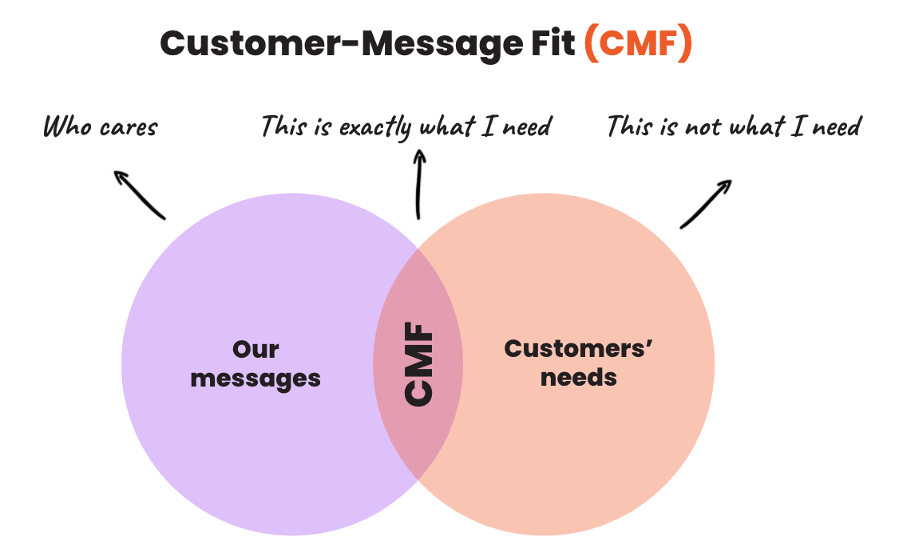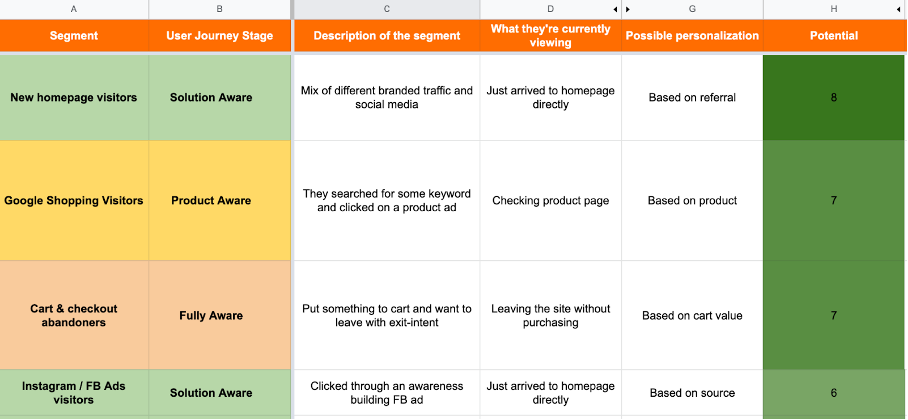A low conversion rate is the nemesis of any online marketer.
Spending your money on ads and getting subpar returns is a real issue. Hence, there’s a huge need for conversion optimization. And this created a whole industry.
But instead of focusing on having more ecommerce conversions, you should focus on having more satisfied customers.
Behind every conversion loss, there’s a disappointed visitor. Behind every abandoned cart, there’s a customer who isn’t happy with your offer. And behind every bounce from your website, there’s a person who didn’t find what they were looking for.
In this post, I’ll discuss why your visitors don’t convert and how you can improve the customer journey with Customer Value Optimization.
Let’s get right into it!
Why don’t visitors convert?
Low conversion rates usually mean that website visitors aren’t interested in your content.
Finding “quick magic tricks” or using “growth hacks” is not the right way to go when you want to increase your ecommerce conversion rate. They might help you increase your conversion rates in the short term, but they could also ruin the customer experience.
Instead, if you want to increase your conversion rates while also increasing your long-term revenue, you should figure out WHY website visitors don’t care about your messages and create one that they would care about and resonates with them.
This is called a Customer-Message Fit (CMF):

Finding the right balance for your CMF can be simple and incredibly hard at the same time because it requires a deep understanding of your customers and their needs.
If you know your customers well, you can group them into segments and create personalized messages for them (and thus convert).
Fixing your leaky bucket takes time and effort, but it’s worth it.
How to improve your customer journey
This is where Customer Value Optimization (CVO) comes in. It empowers marketers to create a unique, remarkable, and meaningful customer journey.
The main essence of Customer Value Optimization is a three-step process.
Let’s take a look at it!
1. Customer journey analysis
The first step is to identify and prioritize the issues with the customer journey. You need to find those user segments that have the biggest problems or the biggest potential to be helped. Here are a few examples:
- New homepage visitors who leave your website without doing anything
- Product page visitors who leave the site without purchasing
- Cart abandoners
Most likely, you’ll be able to collect dozens of issues in your ecommerce store, so you won’t be able to address all of them right away. You should figure out which are the most important ones (we like to call them “optimization opportunities”).
You can use a Google Sheet to create a prioritized list of segments:

2. Optimization planning
The second step is putting together a series of hypotheses about HOW you want to solve these issues. Meaning, how can you create a better customer experience for your site visitors.
Usually, you can solve a specific problem with the customer journey in many different ways.
For example, if many people abandon your site, you can decide to ask for feedback or offer a discount on an exit-intent popup. Or for product page abandoners, you can recommend other products or offer a discount on the product they just checked out.
Since your resources are limited, you’ll have to prioritize your hypotheses and test the most promising ideas first.
3. Experimentation
The third step is to test these hypotheses, measure the results, draw your best conclusions, and tweak your solution methods again.
We call it the BML (Build-Measure-Learn) cycle because it’s a continuous process, where the output of every cycle (the learnings) can be the input of a new cycle.
Final thoughts
Customer Value Optimization is about prioritizing your customer’s needs. It will not just result in increased ecommerce conversion rates, but also help you to build true connections and long-term relationships.
If you want to learn more about the power of Customer Value Optimization, read our Ultimate Guide To Customer Value Optimization!












